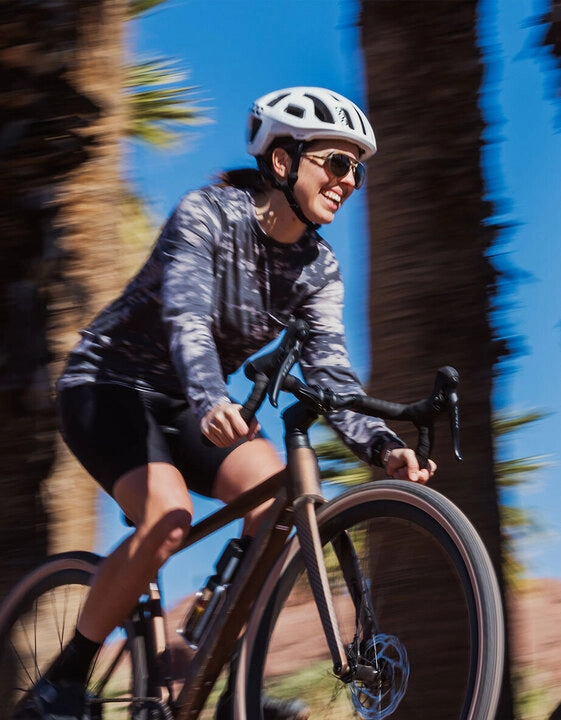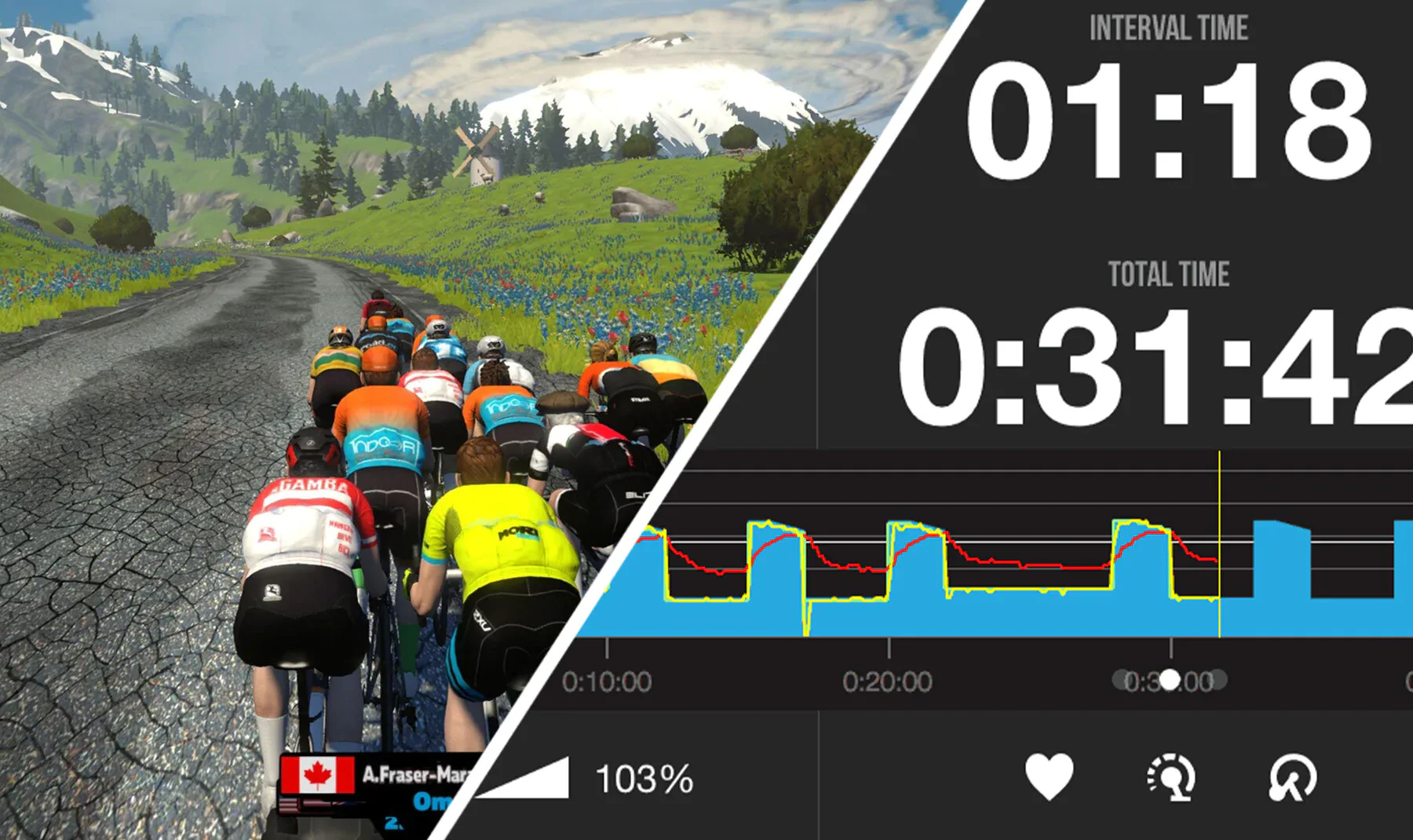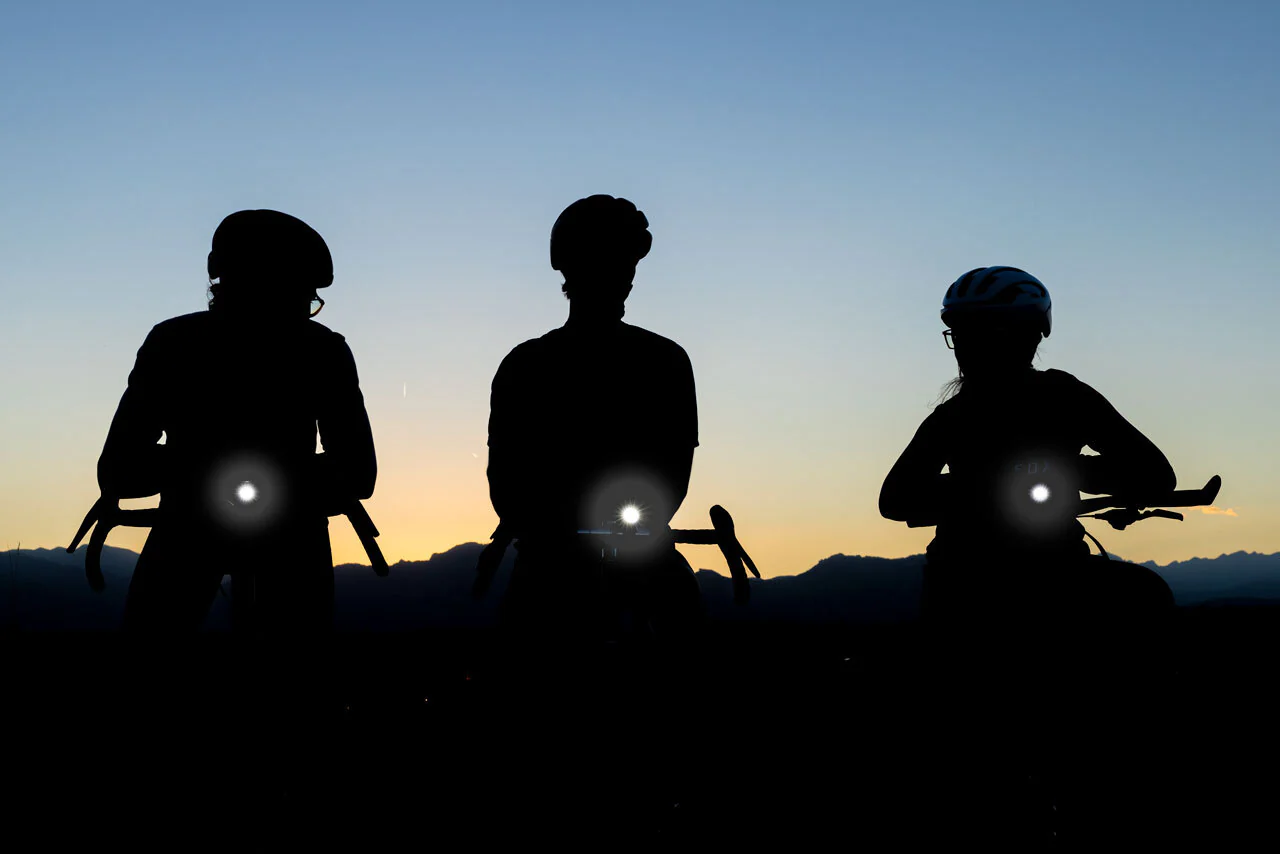For many cyclists, winter weather means the end of outdoor riding. But some are brave and rugged enough to continue venture out despite the cold. What's their secret? The answer is obvious — they dress for the conditions! Famed polar explorer Ranulph Fiennes once said, “There's no such thing as bad weather, just inappropriate clothing.” The key is layering. Owning multiple layers allows you to easily customize your kit to handle different conditions.
On dry and temperate winter days, you don’t need much. A vest, gloves, and a set of arm and knee warmers will get you pretty far. (Check out our list of Spring and Fall Riding Essentials to learn more.) But when the temps really start dropping, it’s time to get serious with some toastier thermal layers. Here’s what you need to survive your coldest rides.
[button]Shop Winter Wear[/button]
Thermal jerseys
[product-block handle="specialized-rbx-expert-thermal-jersey-long-sleeve-mens"/]
[product-block handle="specialized-rbx-expert-thermal-jersey-long-sleeve-womens"/]
[product-block handle="ornot-mens-grid-thermal-jersey"/]
[product-block handle="ornot-womens-grid-thermal-jersey"/]
[product-block handle="giro-mens-chrono-long-sleeve-thermal-jersey"/]
[product-block handle="XXX"/]
Surviving the cold all begins with keeping your core warm. Once temps dip below 55° F / 13° C, I bust out the long-sleeve thermal jersey. Thermal jerseys are what my entire winter kit is built around. They are thicker than summer-weight jerseys, so they retain more heat while still wicking away moisture. These can be worn as a single layer when it's chilly or, as it gets colder, they can be enhanced with a base layer or jacket.
[button]Shop Long Sleeve Jerseys[/button]
Base Layers
[product-block handle="specialized-seamless-baselayer-long-sleeve-mens"/]
[product-block handle="specialized-seamless-baselayer-long-sleeve-womens"/]
[product-block handle="giro-chrono-long-sleeve-base-layer"/]
[product-block handle="ornot-lightweight-base-layer"/]
Base layers make a big difference in the winter because they (should) have a skintight fit which will help move moisture away from your skin and keep you drier. Staying dry is key to staying comfortable in the cold. Combine a short or long sleeve base layer with a thermal jersey, and you’ll be good in 45-55° F weather. If you need more warmth, thermal base layers are a good option. I find heavy base layers can feel a bit bulky with a thermal jersey, so it’s best reserved for the coldest conditions.
[button]Shop Base Layers[/button]
Jackets
Cold-weather cycling jackets fall into two main categories: lightweight wind shells and full-weight insulated jackets.
[product-block handle="specialized-legacy-wind-jacket-mens"/]
[product-block handle="giro-mens-chrono-expert-wind-jacket"/]
Lightweight shells are what I use most often. They can be packed down and carried on the bike for cold descents, sudden temperature changes, or surprise rain showers. Worn over a thermal jersey, they act as an effective wind breaker, adding a lot protection without extra weight or bulk.
[product-block handle="giro-mens-cascade-insulated-jacket"/]
[product-block handle="giro-womens-cascade-insulated-jacket"/]
Full-weight jackets are a good alternative to wearing a thermal jersey with a shell. They’re often slightly heavier, but tend to be more windproof and water resistant, so they’re great for harsher winter conditions. They’re often worn with a summer jersey or baselayer underneath, or if you want maximum warmth for freezing temps, stick a thermal jersey underneath.
[button]Shop Jackets[/button]
Thermal Tights / Thermal Bibs / Pants
[product-block handle="giro-mens-chrono-expert-thermal-bibs"/]
[product-block handle="giro-womens-chrono-expert-thermal-halter-bibs"/]
[product-block handle="giordana-av-bib-full-windfront-mens-tights-w-pad-black-small"/]
With your torso adequately covered, it’s time to cover up your legs. Because they are doing the majority of the work on the bike, you usually don’t need multiple heavy layers. A good set of mid-weight thermal bib tights should be enough to ride all the way down to 40° F.
[product-block handle="poc-essential-road-thermal-tights-uranium-black"/]
Some tights are also available without a chamois pad. This allows you to wear your summer cycling shorts underneath. Chamois-less tights are usually cheaper, and they’re handy if you prefer the chamois in your summer shorts. They can also save money by allowing you to use your collection of summer shorts all year-round.
[product-block handle="fox-racing-ranger-pants"/]
If you’re going out in serious cold — below freezing — you will need a bit more protection. For this I turn to mountain biking pants, which are easy to layer over tights or thermal leggings. They’re often water resistant and designed with pedaling in mind, so they won’t get caught in your bike or drivetrain.
[button]Shop Thermal Bib Tights[/button]
[newsletter]
Head Gear
[product-block handle="giro-ambient-winter-cap"/]
[product-block handle="louis-garneau-winter-skull-cap-black"/]
Thermal cycling caps and “skull caps” are warmer than traditional cycling caps, but still thin enough to easily fit under your helmet. They’re essential in the cold winter months because they wick away sweat and protect your head and ears from wind chill.
[product-block handle="patagonia-micro-d-gaiter"/]
Adding a buff or neck gaiter is also a good idea. This lightweight and stretchy tube of fabric has many uses. Leave it around your neck like a scarf, pull it up over your face when it gets too chilly, or wrap it around your whole head like a balaclava.
[button]Shop Headwear[/button]
Gloves
[product-block handle="gore-c3-gore-tex-infinium%E2%84%A2-stretch-mid-full-finger-gloves-black"/]
[product-block handle="giro-ambient-2-0-gloves"/]
[product-block handle="XXX"/]
Gloves come in many different weights to suit different temps and riders. Thinner, lightweight gloves provide better dexterity, but might not have enough insulation for the coldest days. It will vary depending on the rider though. Some cyclists can ride in thinner, light- to mid-weight gloves all the way down into freezing temps.
[product-block handle="giro-proof-gloves"/]
[product-block handle="45nrth-nokken-gloves"/]
Other riders might need heavier gloves with more insulation to keep their fingers happy.
[product-block handle="giro-100-proof-gloves"/]
For those that really struggle with cold and numb fingers, a lobster or mitten-style glove that keeps your fingers packed together is usually the best solution.
Whatever your insulation preference, good cold-weather gloves should have a windproof backside, since windchill will have a big effect on your hands. If you have sweaty palms like me, I recommend carrying an extra pair of gloves on cold rides so you can swap to a dry pair later.
[button]Shop Gloves[/button]
Socks and Shoe Covers
[product-block handle="giro-winter-merino-wool-socks"/]
[product-block handle="7373215531200-silca-gravel-socks-martini-stripes"/]
[product-block handle="fox-racing-8-defend-winter-socks"/]
I tend to prefer thinner thermal socks, even in freezing weather, simply because super thick thermal socks negatively affect the fit and comfort of my cycling shoes. Fortunately, modern thermal and merino wool cycling socks provide enough warmth when paired with shoe covers or winter shoes.
[product-block handle="7449289326784-giro-ambient-toe-covers"/]
[product-block handle="specialized-neoprene-toe-cover"/]
[product-block handle="giro-proof-2-0-winter-shoe-covers"/]
Winter shoes are nice if you can afford them, but many riders don’t want to deal with purchasing and setting up a second set of shoes and cleats just for a few months of riding. Thermal toe caps will block enough wind to get you down into the mid-40s. Then, once it’s colder than that, I’ll switch to full shoe covers. Good shoe covers combined with warm socks are enough to comfortably ride all the way down to just above freezing.
[button]Shop Socks & Shoe Covers[/button]
[button]Shop All Apparel[/button]

























